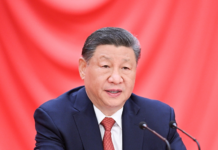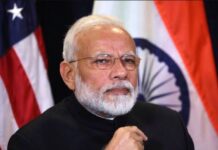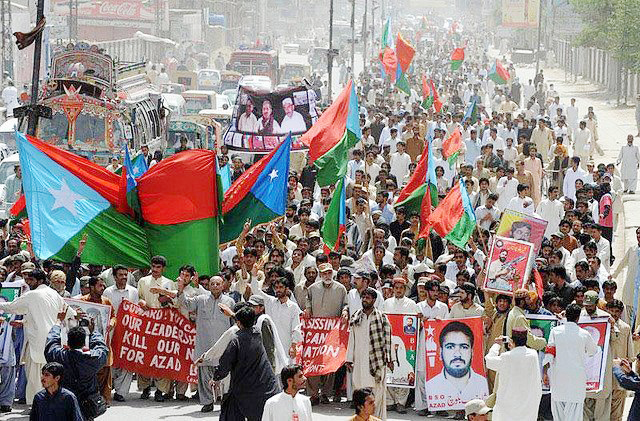I have spent over three years in different parts of Punjab, mainly in Multan for studies. Apart from Multan, I have been to Lahore, Faisalabad, Bahawalpur, Bahawalnagar, Khanewal, Dera Ghazi Khan; in pinds (villages), Mandi Sadiq Ganj, Dera Bakkhar Wala, and Qasim Wala. A few of the misconceptions about Balochistan and the people living here were common almost everywhere I went. This piece aims to discuss and correct them.
Misconception 1: Balochistan is a place where only Baloch live
If you think that Balochistan is home to people who all belong to a single ethnicity, that is Baloch, then you are wrong. The majority of the people who live in Balochistan are ethnically Baloch, but Balochistan is a multi-ethnic province that includes Pashtuns, Sindhis, Hazaras, Seraikis, Punjabis, Hindkos, Kashmiris, Gilgitis, Urdu and Persian speakers, even Tajiks, and Uzbeks. As a matter of fact, the number of Baloch living in South Punjab is more than the total Baloch population in Balochistan. In short, Balochistan is home to multiple ethnicities, also, multiple religions, as Hindus, Christians, and Zoroastrians also live in different parts of the province, and they own businesses too.
Misconceptio# 2: The people of Balochistan are anti-state
It would be unfair if I claim that Balochistan is filled with individuals deeply devoted to the country. However, it is also an exaggeration to believe that the people of Balochistan are anti-state. People living in Balochistan, particularly the Baloch and Pashtun nationalists, do have grievances, but that by no justification makes them anti-state. Most of these dissidents are concerned citizens and they, like any average Pakistani today, believe that the country is not on the right track. The difference is that they are quite vocal against the policies that they think are against the national integration of Pakistan. In short, they are not against the state but certain policies and attitudes.
There are various misconceptions about Balochistan and its people, notably in Punjab. While these ideas can’t be dismissed outright, they are largely incorrect. The negative image of Balochistan is attributed to media, unchecked information, and limited communication between the people of Balochistan and Punjab. Therefore, it is recommended to increase the portrayal of the true image of Balochistan in media and increase communication between Balochistan and Punjab through different cultural exchange programmes like celebrating Baloch culture in Punjab and Punjabi and Seraiki cultures in Balochistan at the government level
Misconception 3: The people of Balochistan are stubborn and aggressive
It would be a white lie to claim that the people of Balochistan are not assertive; however, they are neither stubborn nor aggressive. Even the assertion in the points of view of the people living in Balochistan is due to its tribal setup, where assertion and confidence are considered a part and parcel of a strong character and bravery, which can be understood by studying the code of conduct of Baloch called the Baloch Mayar and Pashtun called the Pashtunwali. That assertion can also be melted down by showing affection and love to its people. As a famous Balochi maxim says, “With love, I am ready to partner you in Hell; with force, I will reject to enter even Heaven.”
Misconception 4: The (majority of the) people of Balochistan are Outlaws
Baloch were described as “uncivilized people engaged in murder and looting” in the Sociology book of the 12th class in Punjab since the mid-1980s. It was corrected in 2016, which means that for some 30 years, people in Punjab were taught that Baloch are outlaws. A great number of them still believe the same. It is not true. Balochistan, despite being the least populated province of Pakistan, has a far greater enthusiasm for higher education and readership of books. It is estimated that in the recent Quetta Literary Festival 2022, books worth Rs 7 million were sold in just three days. There are hundreds of single-room libraries in Quetta alone where people have turned their drawing rooms into libraries as libraries of the city are already entertaining readers beyond their capacities. A fine number of tuition centres, English language academies, and freelancing training centres are present almost everywhere in the province. There are people who donate books to libraries on a routine basis. The people of Balochistan are serving in different institutions, actively participating in politics, doing business, and much more. In short, the crime ratio in Balochistan is below the average crime ratio (3.98 percent) in the country and the people of Balochistan are actively participating in different fields.
Misconception 5: Balochistan is not a safe place (to live in)
It is true that owing to multiple factors, Balochistan is not as safe and secure as it used to be. However, wondering how people are still living in Balochistan defines the frightful images the people of Punjab carry about Balochistan. The major source of such frightful images is the media, as BBC headlined Quetta, ‘Hell on Earth’ in 2013. But that is no longer relevant. A large portion of Balochistan might not be safe for tourists, not because the locals dislike outsiders, but because it is a thinly populated province. In the case of a vehicle breakdown or accident, there is no help for miles; however, Balochistan is livable. People living in Balochistan are as human as the rest of the Homo Sapiens and they do earn a living, go for picnics, play sports, like partying, and have fun, which they despite odds manage to do. In short, Balochistan is livable.
Misconception 6: The people of Balochistan are against Punjabis
It would be sheer romance to claim that Punjabis are welcomed with open arms in Balochistan. The incidents of killing Punjabis had gained a significant pace after the assassination of Nawab Akbar Bugti on 26 August 2006. However, the whole of Balochistan cannot be blamed for their killings, as Balochistan has a significant number of Punjabis living and working here. Even I recall one of my school teachers, to whom we had asked, “Why aren’t you leaving (Balochistan as many of our Punjabi teachers have left due to the ongoing killings of you people?)” and he confidently replied, “How can one abandon his mother(land)?” In short, Punjabis did face tough times in the province in the recent past, but that does not mean that the people of Balochistan hate or are against them. It also needs to be understood that the majority of the people who influence the policy-making of the country are Punjabis and it naturally creates a sense of apprehension against this majority not only in Balochistan but also in other parts of Pakistan.
Misconception 7: Balochistan is ruled by Sardars
Indeed, many elders in Balochistan themselves do not adhere to the code of conduct of their ethnicities and there are stories of them torturing their tribesmen, but that is not the case in the whole of Balochistan. The tribal setup in Balochistan is not as intact as it was in the past; also, the tribal setup of Balochistan is different from the tribal setup of Sindh and South Punjab. To legitimize his authority, A Sardar has to ask his tribesmen to vote for him. If they were the rulers of Balochistan then they would have not requested people to vote for them. Even political engineering in Balochistan is proof that many Sardars who do not deserve the seat, need an outside push to legitimize their control. In short, Balochistan is ruled by the same people who rule Pakistan.
In sum, there are various misconceptions about Balochistan and its people, notably in Punjab. While these ideas can’t be dismissed outright, they are largely incorrect. The negative image of Balochistan is attributed to media, unchecked information, and limited communication between the people of Balochistan and Punjab. Therefore, it is recommended to increase the portrayal of the true image of Balochistan in media and increase communication between Balochistan and Punjab through different cultural exchange programmes like celebrating Baloch culture in Punjab and Punjabi and Seraiki cultures in Balochistan at the government level.























